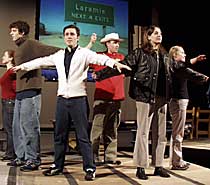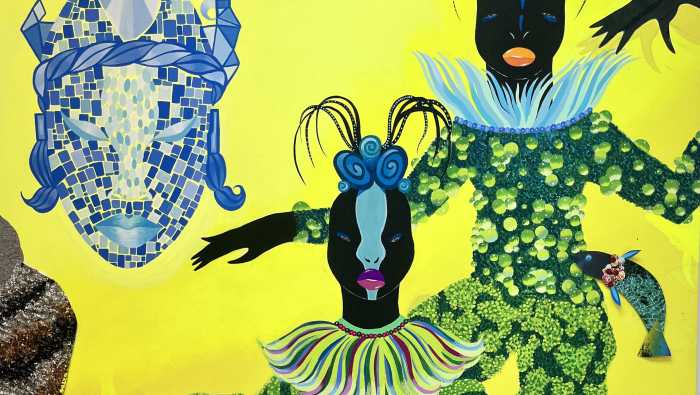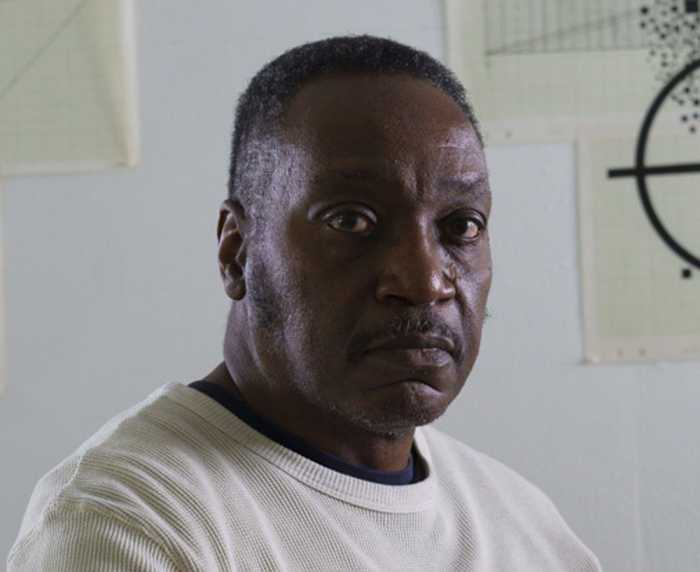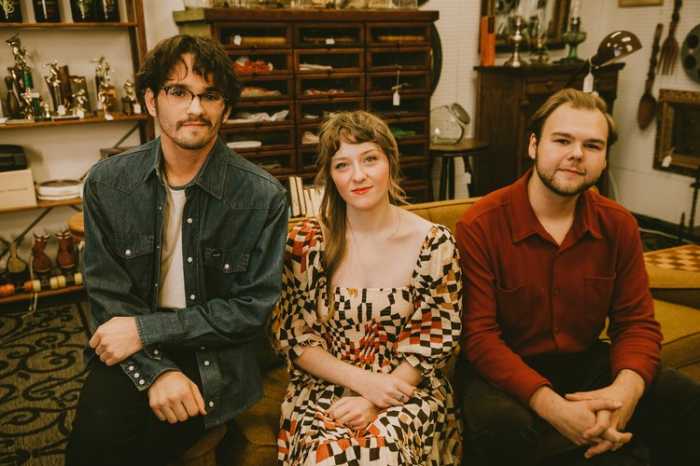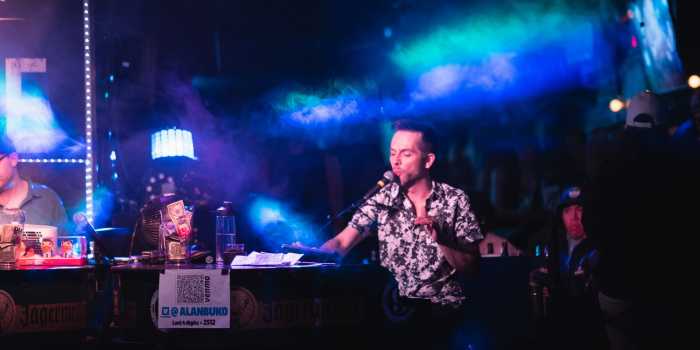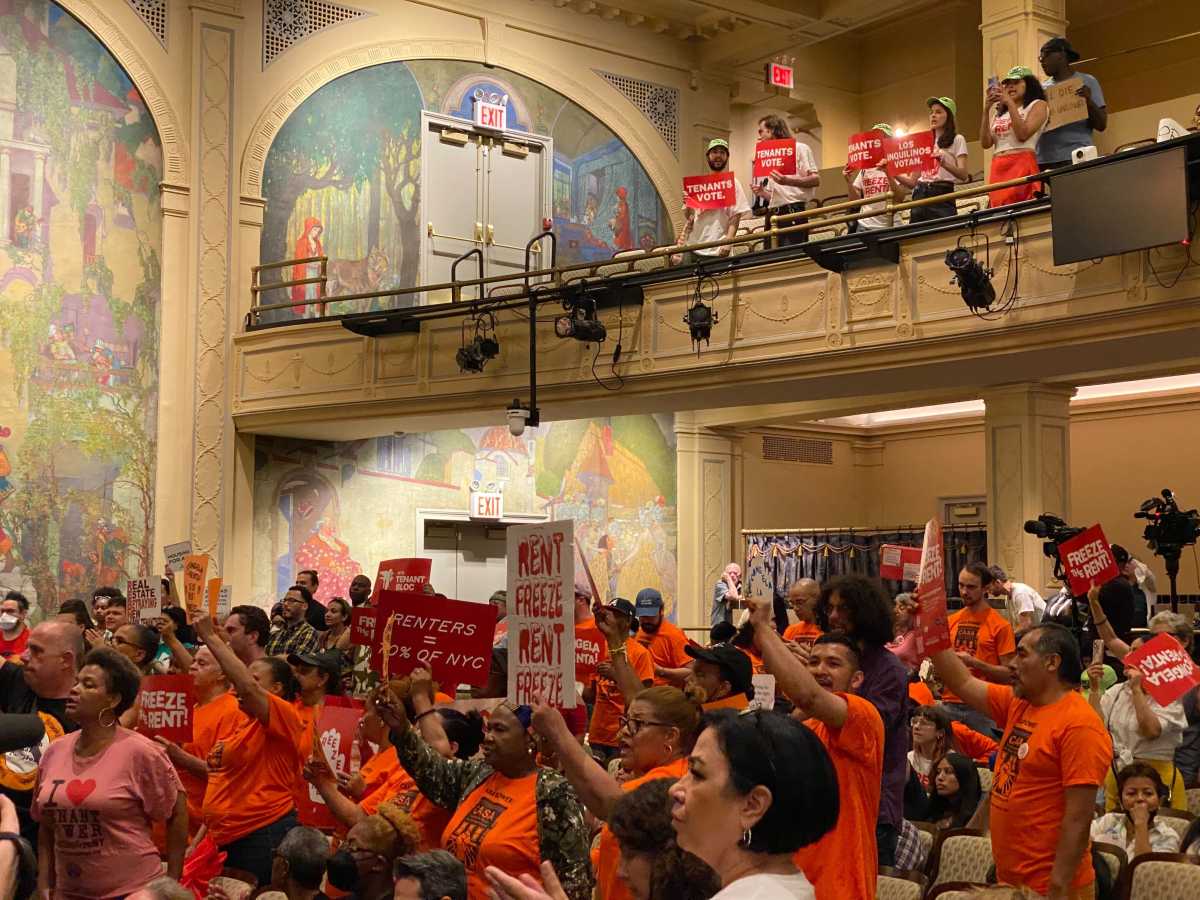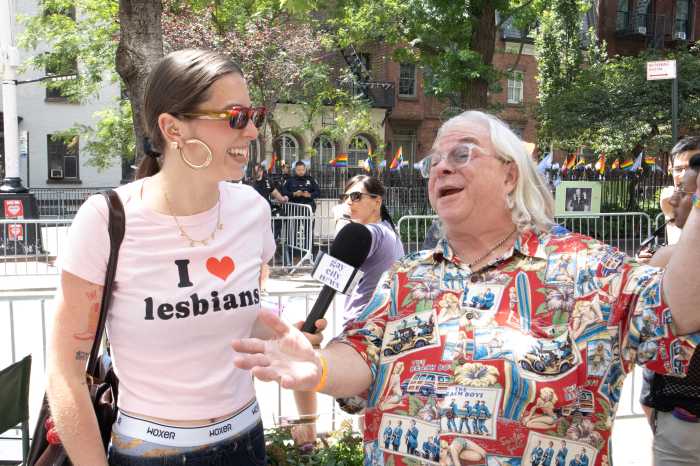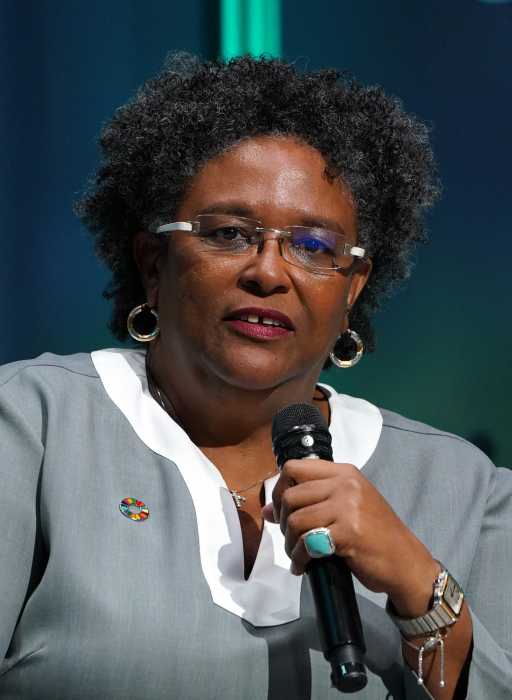The Brooklyn College theater department
tackles an infamous hate crime in its latest production, "The
Laramie Project."
On the night of Oct. 7, 1998, two young men, Russell A. Henderson,
21, and Aaron McKinney, 22, approached Matthew Shepard, a 22-year-old
openly gay University of Wyoming student, in a Laramie, Wyo.,
bar. It was never perfectly clear how or why they got him into
their truck, but once he was there, they drove him to a secluded
spot in the middle of the prairie, tied him to a ranch fence,
pistol whipped him with a .357 Magnum handgun, stole his wallet
and shoes and left him to his fate in the freezing night.
Eighteen hours later Shepard’s nearly lifeless body was found
by a passing bicyclist, and he was taken to the Poudre Valley
Hospital where he died five days later.
While Shepard fought for his life, the town, indeed the entire
nation, watched, prayed, held candlelight vigils and tried to
understand how such a heinous crime could have been committed
in a sleepy little town.
A month after the incident, Moises Kaufman, artistic director
of the New York-based Tectonic Theater Project, took nine company
members to Laramie to interview its citizens, connected or not
connected to the crime.
Kaufman was a 36-year-old playwright and director, the son of
a Holocaust survivor from Romania, who grew up Jewish and gay
in Venezuela, a predominantly Roman Catholic country. As someone
who never quite fit in, he was fascinated with the fate of another
gay man who had apparently died because he was deemed "different."
During six trips, Kaufman and his crew interviewed more than
200 people, recording hundreds of hours on tape, and collected
court transcripts and police reports – all of which resulted
in "The Laramie Project," a series of 76 brief vignettes
and monologues that convey the immediate aftermath of the murder,
as well as the trials of Henderson and McKinney.
When "The Laramie Project" opened at the Denver Center
for the Performing Arts on Feb. 27, 2000, it was hailed as theatrical
journalism – an attempt to tell a true story through a combination
of research, reporting and artistic license.
Kaufman and his colleagues interviewed prosecutors, investigators,
the bartender who served Shepard the night he was assaulted,
the bicyclist who found him, friends and relatives of Shepard,
friends and relatives of his killers and townspeople who had
no connection with either the killers or their victim.
They also interviewed Shepard’s parents, Judy and Dennis
Shepard, but they are not represented in the play, nor are the
killers. In fact, the emphasis of "The Laramie Project"
is not the psychological motives of the killers or the plight
of a young gay man living in a small Wyoming town, but rather
the reactions of the townspeople to this embarrassing and horrendous
"hate crime" and its political implications. As a result,
"The Laramie Project" has deeply moving moments, but
it is not a deeply moving play.
In fact, it is not a play at all.
But – and this is a big but – in the hands of capable actors
like those currently performing in the Brooklyn College production
of "The Laramie Project," on stage at the Gershwin
Theater through March 9, Kaufman’s inspired dialogue takes on
a life of its own, and it is easy to forget that the play speaks
mostly for people whose lives have been only marginally affected
by the drama.
"The Laramie Project" is directed by Rose Burnett
Bonczek, head of the Bachelor of Fine Arts in Acting program
at Brooklyn College and deputy chair of the undergraduate theater
division, and it’s performed by an ensemble of nine student actors
– Emily Strong Campbell, Sarah Flanagan, Melanie Hopkins, Troy
Lescher, Kent Martin, Valerie Clayman Pye, Matthew Raynor and
Ian Wen.
During the second act, which depicts the chaos that ensued when
the media descended on Laramie, a video installation designed
by Master of Fine Arts students Christopher Clemens and Clinton
Philson, from the department of television and radio, is projected
on two large screens, along with a live video of actors in the
role of television reporters, giving the audience the dual perspective
of observers of the action and observers of the observers of
the action. The set design, by Prof. Richard Kearney, consists
of eight wooden chairs, a wooden plank and several coat racks
upon which are hung the clothing the actors use when changing
roles.
The play – at two and a half hours with two intermissions –
is a challenge for both the actors and the audience. But even
if some in the audience might wish for a bit of pruning, the
actors never lose their energy or their commitment to a script
they obviously believe in passionately.
There are several truly memorable moments in the play – Dr.
Cantway (Raynor), who took care of both Shepard and McKinney,
wondering if God feels the same compassion he did when looking
down on the plight of his creations, and the reading of Dennis
Shepard’s statement by Wen, in which he declines to ask for the
death penalty, giving McKinney life in the memory of his son,
to cite just two.
But even the less emotional scenes – with a local waitress,
a cabdriver, ministers doctors and professors – have humor, compassion
and, most of all, the ring of truth.
There are some glaring holes in "The Laramie Project."
Once Kaufman had decided this was a hate crime, it apparently
never occurred to him that the question we need answered is not
so much what provokes homophobia and hate crimes, but rather
what causes children to grow up into violent, aimless, bullying
adults.
"The Laramie Project" only hints at the facts (on
"The Laramie Project" Web site) that both Henderson
and McKinney were high school dropouts; that Henderson had already
committed several driving offences and had been convicted twice
of drunken driving; that McKinney, the father of a new baby,
was known around Laramie for his short temper and willingness
to brawl, and was awaiting sentencing for stealing $2,500 from
a Kentucky Fried Chicken; that according to friends, McKinney,
who had lost his mother five years before, once "flipped
out" in a Laramie bar on encountering the doctor he believed
was responsible for his mother’s death; and that shortly after
the attack on Shepard, McKinney returned to town, provoked a
fight with two Hispanic youths and ended up in the hospital with
a fractured skull.
Although the audience does learn that Shepard was 5-foot-2 and
wore braces on his teeth, it doesn’t find out that Shepard was
a graduate of the American School in Switzerland; that he spoke
German and Arabic; and that he had returned to the United States
to live in this isolated town of 27,000 – where he would become
a sitting duck for the likes of people like Henderson and McKinney
– so he could attend the alma mater of his father, an oil rig
safety inspector in Saudi Arabia.
If all this is not the stuff of real drama, then what is?
But none of these omissions should have any bearing on any assessment
of these nine actors’ magnificent performances, which alone make
"The Laramie Project" well worth both the price of
admission and the three hours of your time.
If these young adults are what we can expect in acting, then
the future is indeed bright.
"The Laramie Project," presented by Brooklyn
College, plays through March 9, Friday and Saturday at 8 pm,
and Sunday at 2 pm, at the Gershwin Theater, located on the campus
of Brooklyn College, Campus Road at Hillel Place, one block from
the junction of Flatbush and Nostrand avenues. Tickets are $15,
seniors $10 and Brooklyn College students $5 (with validated
ID). For tickets and information, call (718) 951-4500.


